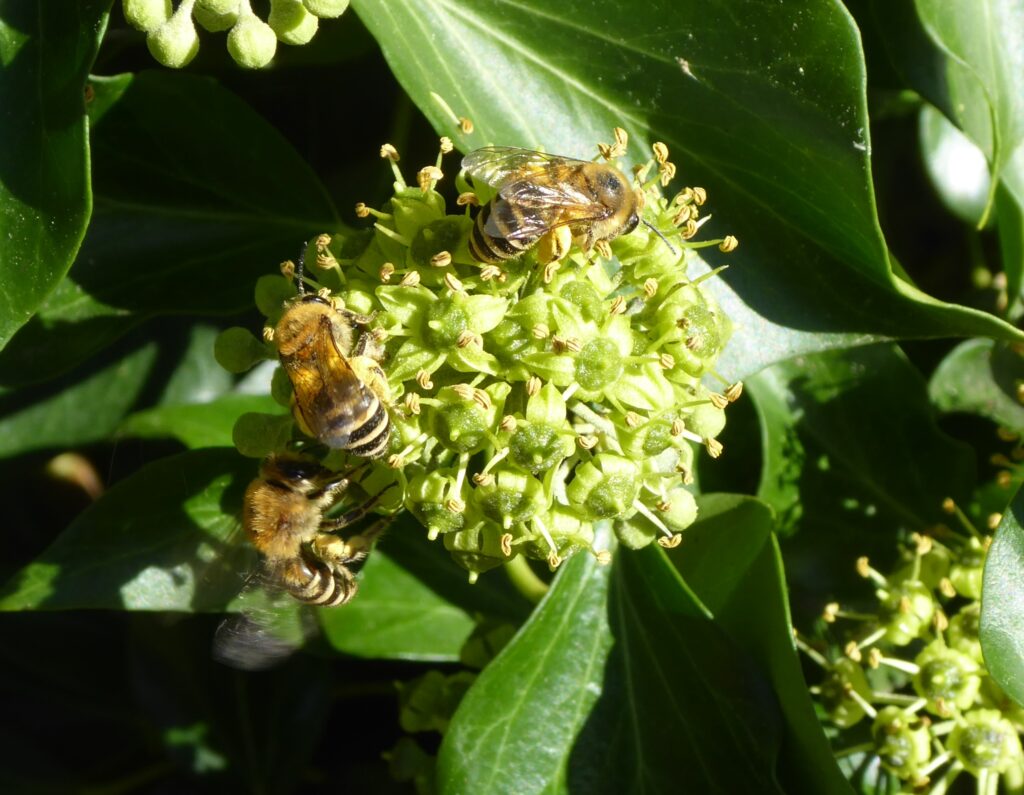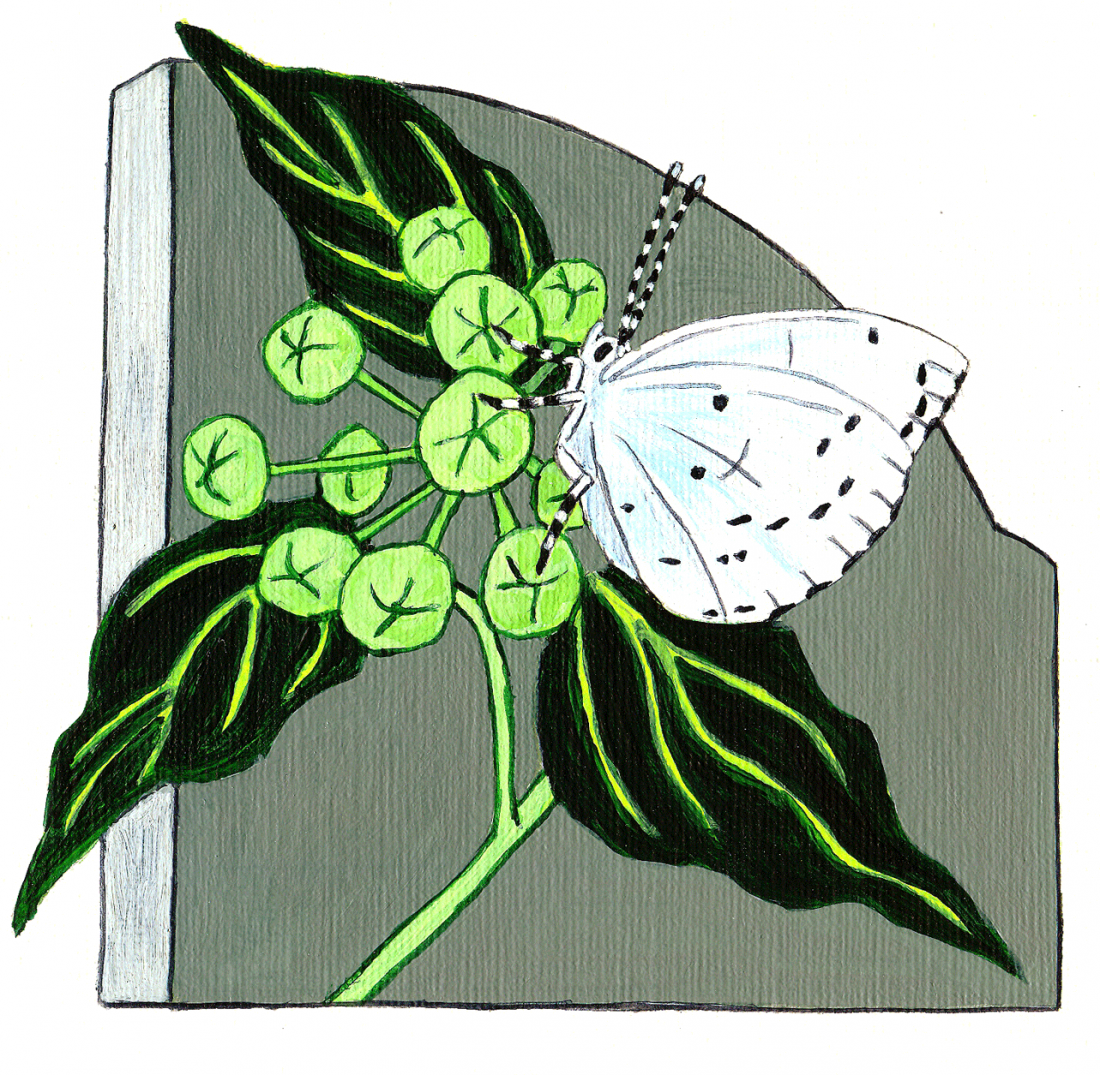Around 70 species of bees have now been recorded in Earlham Cemetery.
Full list of bees found in Earlham Cemetery.
Bees rely on grassland flowers and flowering shrubs and trees to provide them with pollen and nectar. Some species also nest in the Cemetery, in a variety of places, including old mouse holes in rough grass (many Bumblebees), shorter turf and grassy banks, bare ground on pathways and hollow old plant stems, such as brambles.
Here is a small selection of species that you may find in Earlham Cemetery. All photographs are by Vanna Bartlett.
1. Large Scabious Mining Bee, Andrena hattorfiana
Earlham Cemetery and its surrounding gardens is the only site for the Large Scabious Mining Bee (Andrena hattorfiana) in the Norwich area, though it occurs in the Brecks and on the North Norfolk coast. It relies on scabious plants to provide pollen to provision its nest cells. It is our largest species of mining bee (Andrena).
Field Scabious is becoming less common in Earlham Cemetery, due to shading by maturing trees and competition from rank grasses. Friends of Earlham Cemetery have recently planted Field Scabious in sunnier parts of the cemetery, in the hope that this decline can be reversed, but it has been difficult to establish plants due to drought and grazing by Muntjac deer.
The bee’s survival in our area can be assisted by people in nearby gardens growing Field Scabious (Knautia arvensis) or Small Scabious (Scabiosa columbaria).
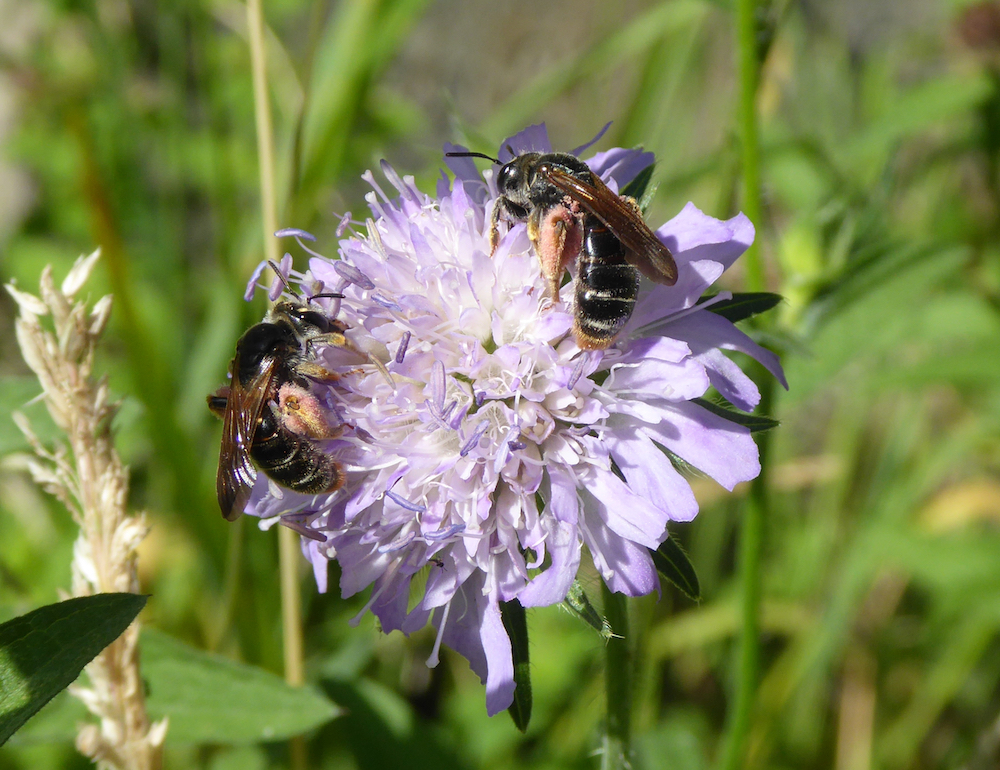
2. Grey-banded Mining Bee, Andrena denticulata
This species of solitary bee is fairly widespread in Norfolk, especially in sandier places.
Many species of Mining Bee (Andrena) fly in the spring but the Grey-banded Mining Bee flies from July to September and loves yellow Asteraceae (Daisy family) flowers, such as Ragwort.
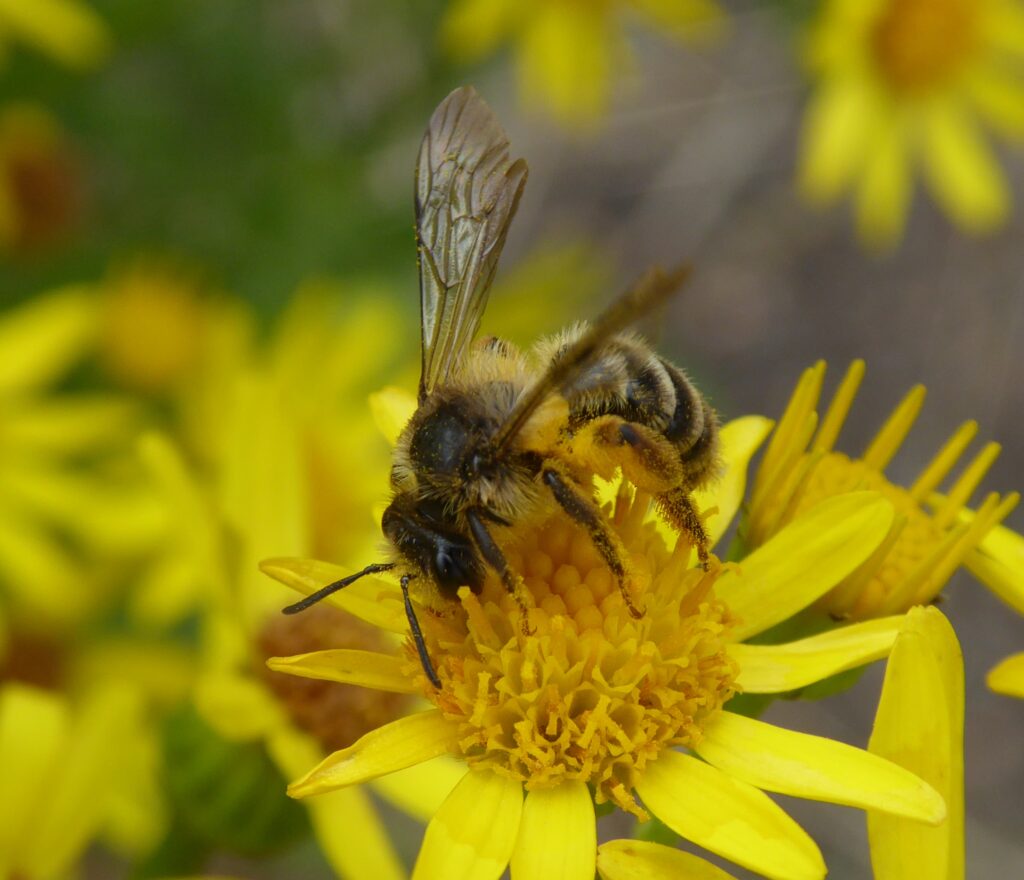
3. Common Furrow-bee, Lasioglossum calceatum
The Common Furrow-bee, Lasioglossum calceatum, is a common species in the British Isles and can be found up to the north of Scotland and in parts of Ireland. Females are on the wing from mid-March to early October and males are seen from late June to end October.
In southern Britain, including Norfolk, the bees are eusocial – i.e. they form small colonies with a queen, males and worker females. However, further north where the weather is colder and the summer is shorter, the bees are solitary.
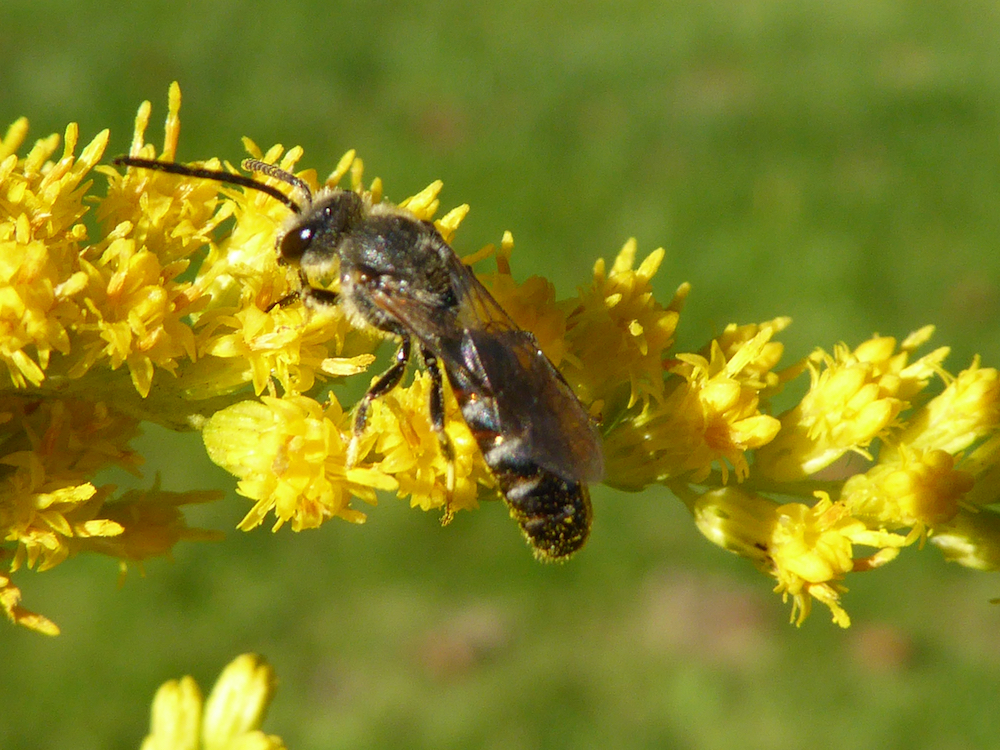
4. Pantaloon Bee, Dasypoda hirtipes
The Pantaloon Bee is named after the female’s “pantaloons” – long orange hairs on the hind legs that she uses to collect pollen. She collects this from flowers of yellow Asteraceae such as Common Cat’s-ear and Smooth Hawk’s-beard. These plants have a basal rosette of leaves so will survive in short turf, but they must be allowed to flower between late June and mid August if they are to provide pollen for bees.
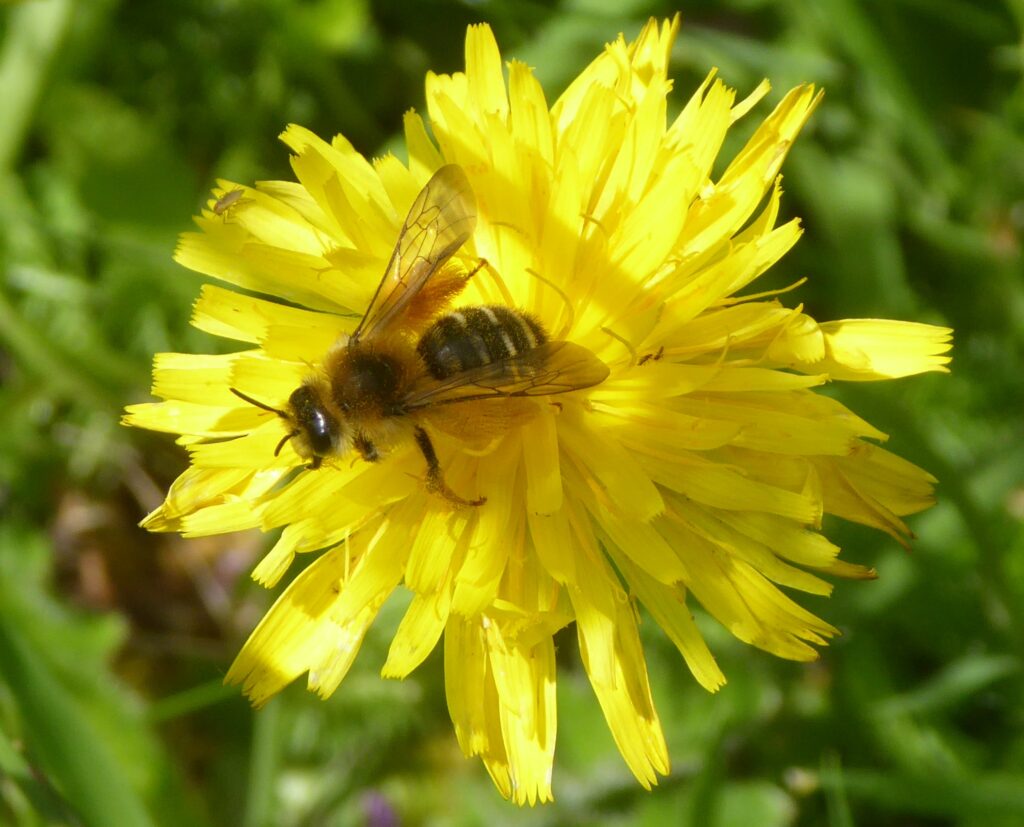
5. Clover Melitta, Melitta leporina
The Clover Melitta flies from June to August. The female collects pollen from clovers and vetches to provision her nest cells. Provided grass isn’t cut too short, patches of White Clover will provide the pollen she requires to produce next year’s bees.
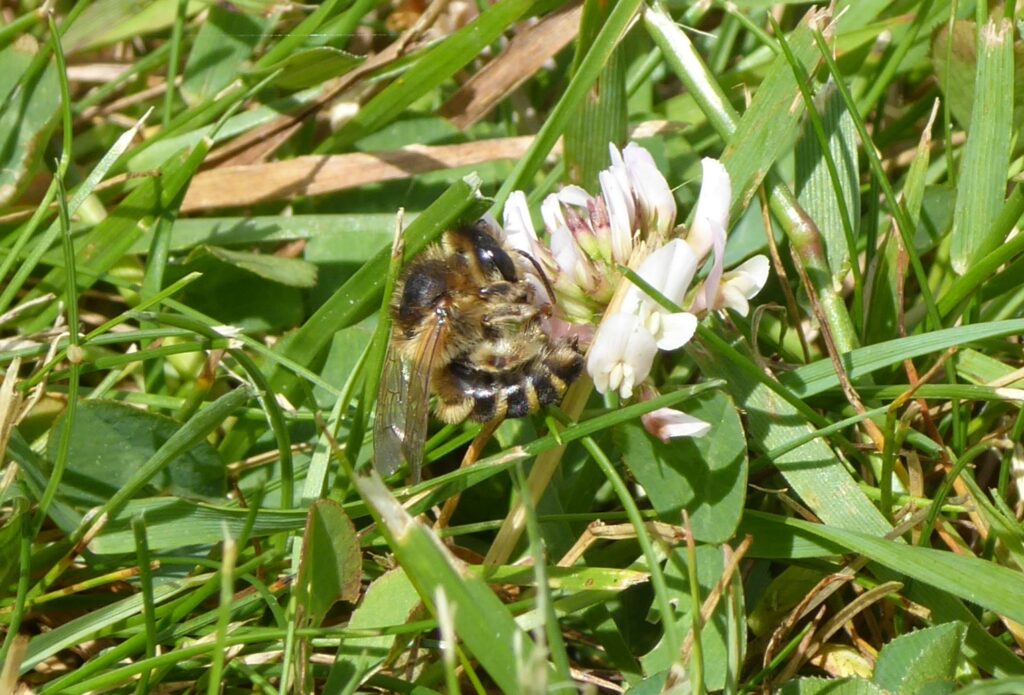
6. Little Yellow-face Bee, Hylaeus pictipes
We have nine species of Yellow-face Bee in Norfolk and this is the smallest and rarest.
Until a few years ago just a single specimen had been found in Norfolk, in the late nineteenth century. Then in 2017, Vanna and Jeremy Bartlett discovered the species in their garden in Norwich. In 2020 they also found it on their allotment and in Earlham Cemetery. It has subsequently been seen at Brundall.
Yellow-face bees often nest in hollow plant stems such as old brambles.
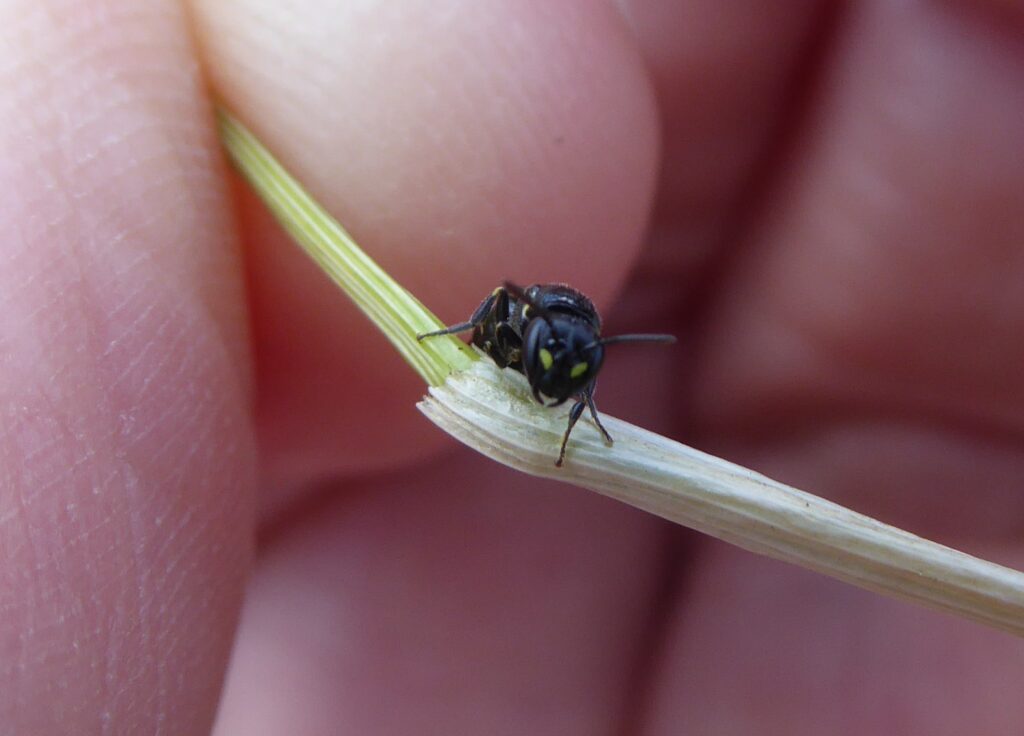
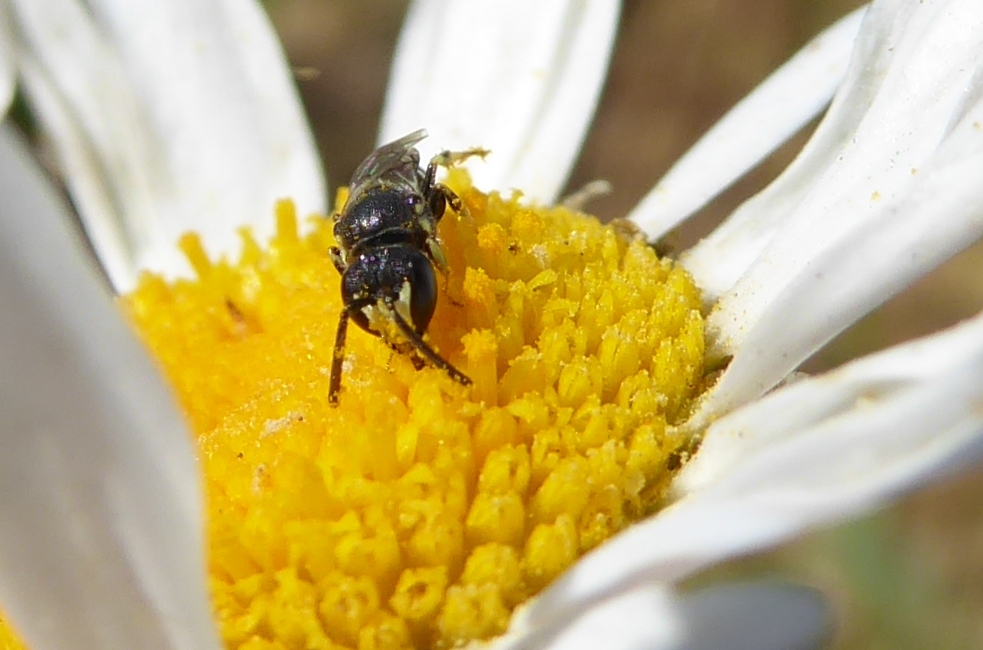
7. Wool-carder Bee, Anthidium manicatum
This large and robust bee is on the wing from late May to early August. Females collect hairs from the leaves of various downy plants (such as Stachys byzantina) to use in making their brood cells. The male is very territorial and has sharp spines at the end of his abdomen which he uses to attack other insects straying into his territory.
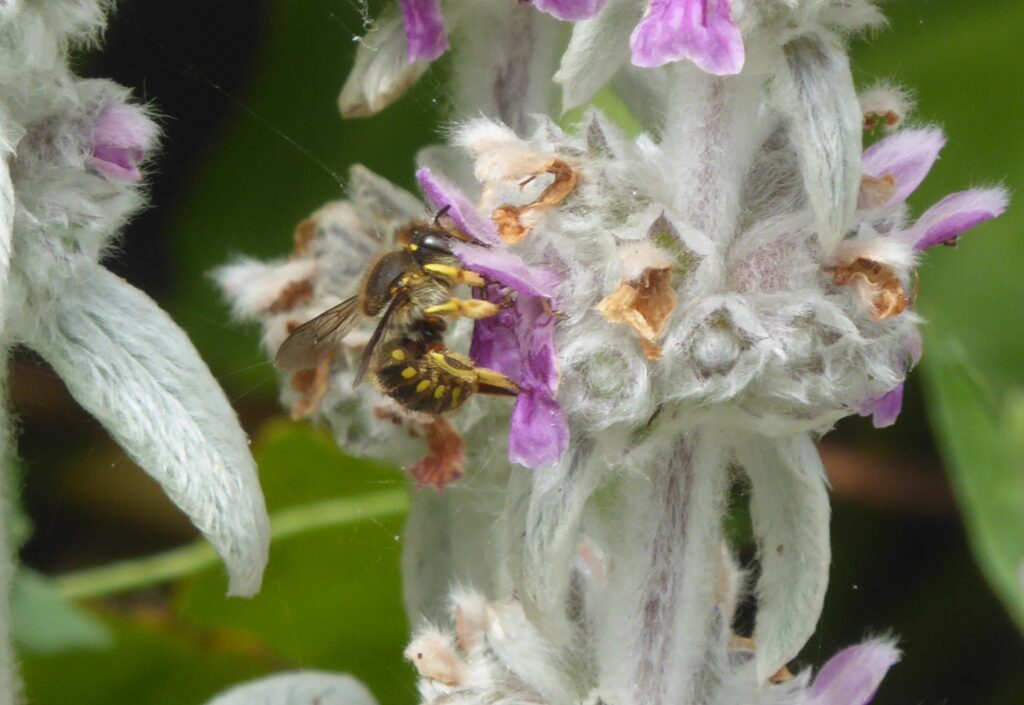
8. Hairy-footed Flower Bee, Anthophora plumipes
One of the first bees of spring, appearing from late February and March. They can be found on Red Deadnettle and Primrose flowers in Earlham Cemetery and on Lungwort and Primrose flowers in surrounding gardens.
Males are brown haired with extensive cream coloured markings on the face and long hairs on the mid tarsi. They will patrol patches of flowers, on the lookout for females, which are all black with orange hairs on the hind tibia.
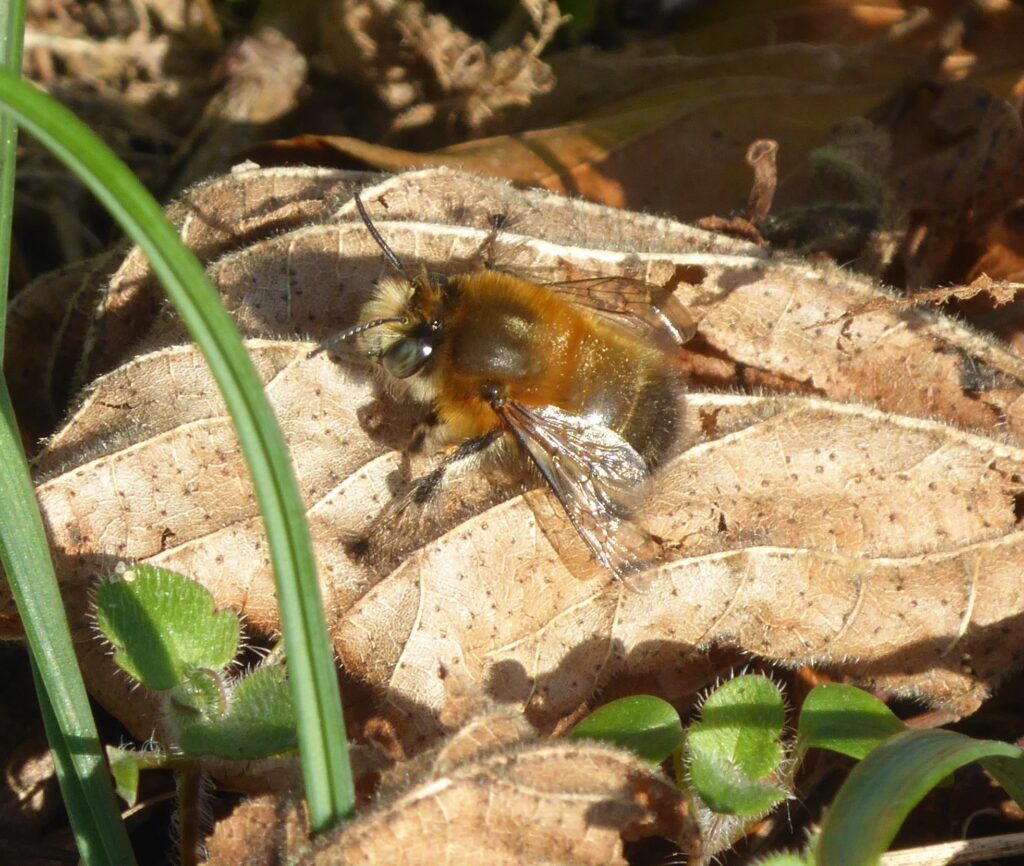
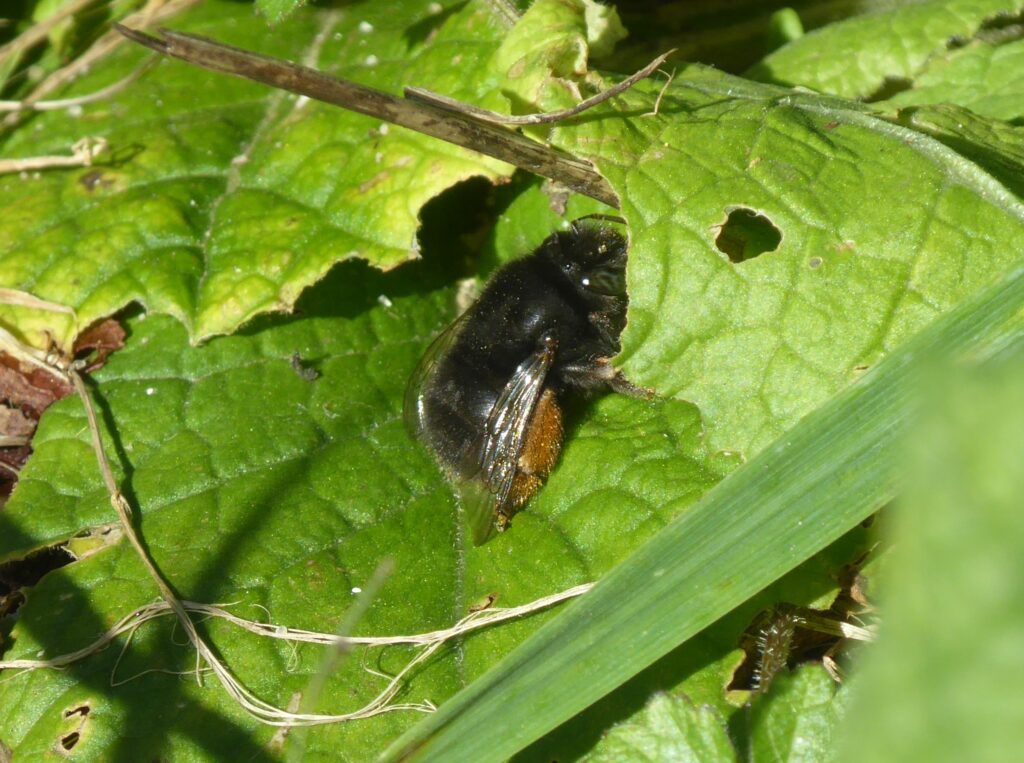
9. Tree Bumblebee, Bombus hypnorum
The Tree Bumblebee arrived in Britain in 2001 and has rapidly spread northwards. The first Norfolk record was from Earlham Cemetery in 2008. Most species of bumblebees nest at or below ground level, such as in old mouse nests. However, Bombus hypnorum nests above the ground, often in bird boxes. Worker bees can often be seen on bramble flowers.
The heat and drought of 2022 appear to have drastically reduced the numbers of this formerly common bee in our area but it continues to spread north and reached the Moray Firth in Scotland in 2023.
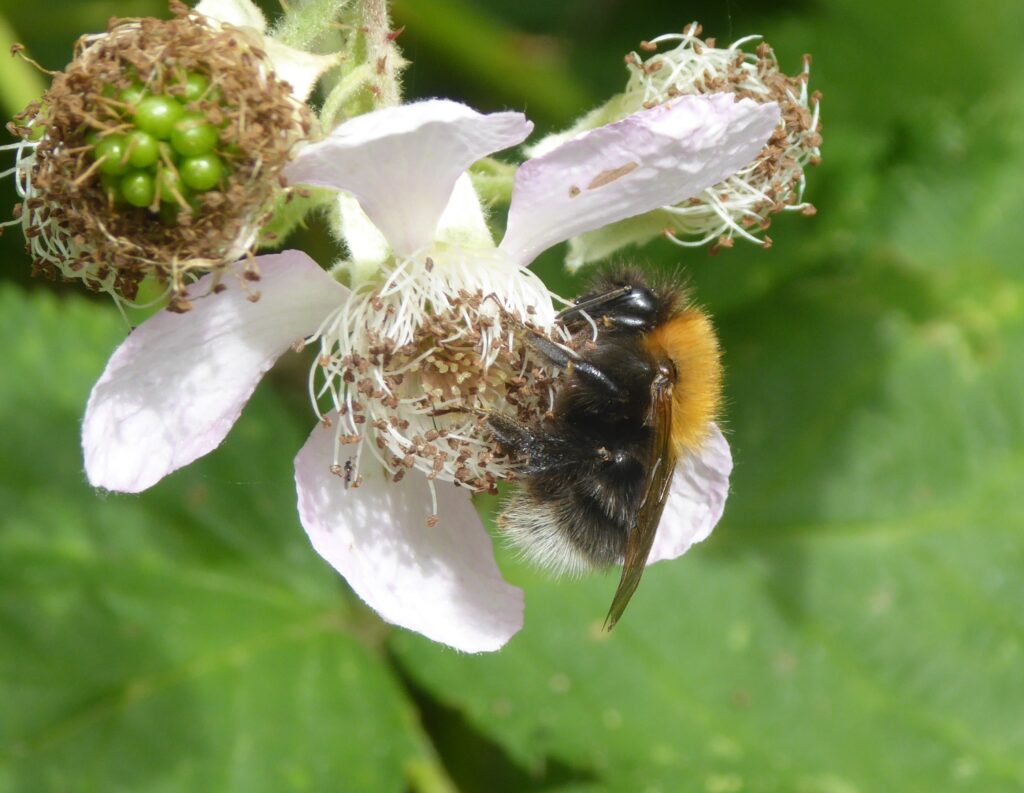
10. Gooden’s Nomad Bee, Nomada goodeniana
Not all bees collect their own pollen and nectar: some are cleptoparasites, which take over their host species’ pollen and nectar stores to raise their young. Well-known examples are Cuckoo Bumblebees, where the female takes over an existing bumblebee colony.
Several different groups of solitary bees are cleptoparasites of other solitary bees, such the Blood Bees (Sphecodes), Sharp-tailed Bees (Coelioxys), Nomad Bees (Nomada), and the Common Mourning Bee (Melecta albifrons), whose host is Anthophora plumipes.
Gooden’s Nomad Bee is one of several nomad bees found in Earlham Cemetery. It lays its eggs in the nest holes of the Buffish Mining Bee, Andrena nigroaenea, and related species. It is found in spring and often visits Green Alkanet flowers. Nomad Bees have a distinctive wasp-like appearance.
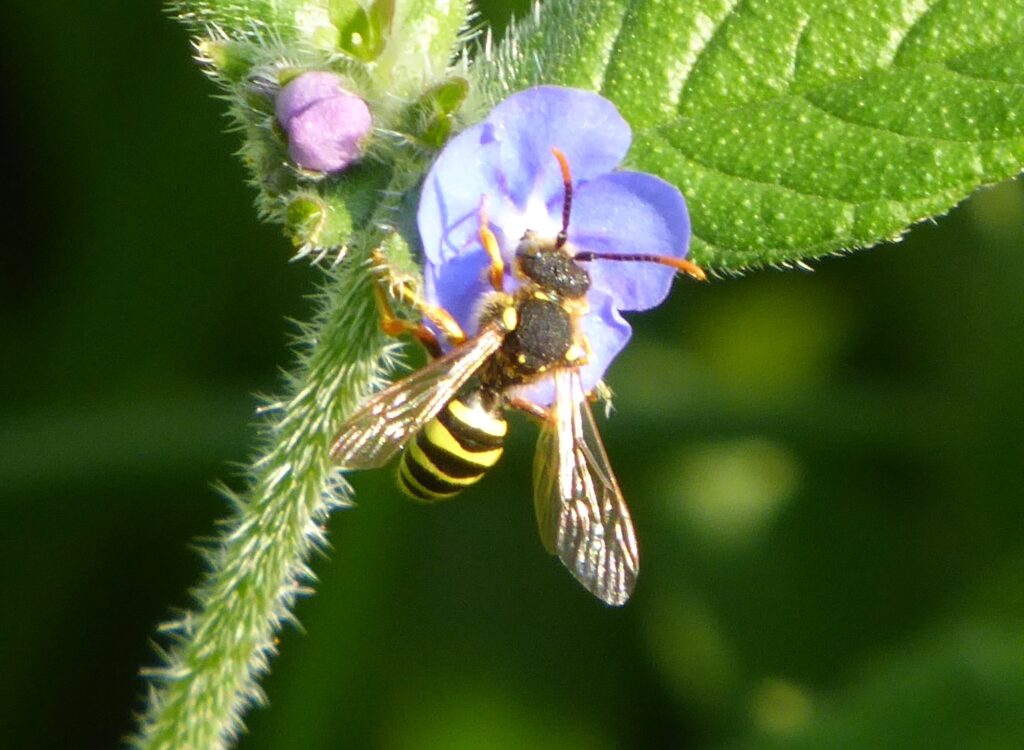
11. Red Mason Bee, Osmia bicornis
The Red Mason Bee is a common and widespread species that flies in spring and early summer. It frequently nests in holes in walls and timber and readily uses bee hotels. It uses mud to build its nest cells and one spring in Earlham Cemetery dozens of Red Mason Bees were visiting a pile of clayey soil to collect nesting material. It is very partial to Green Alkanet flowers.
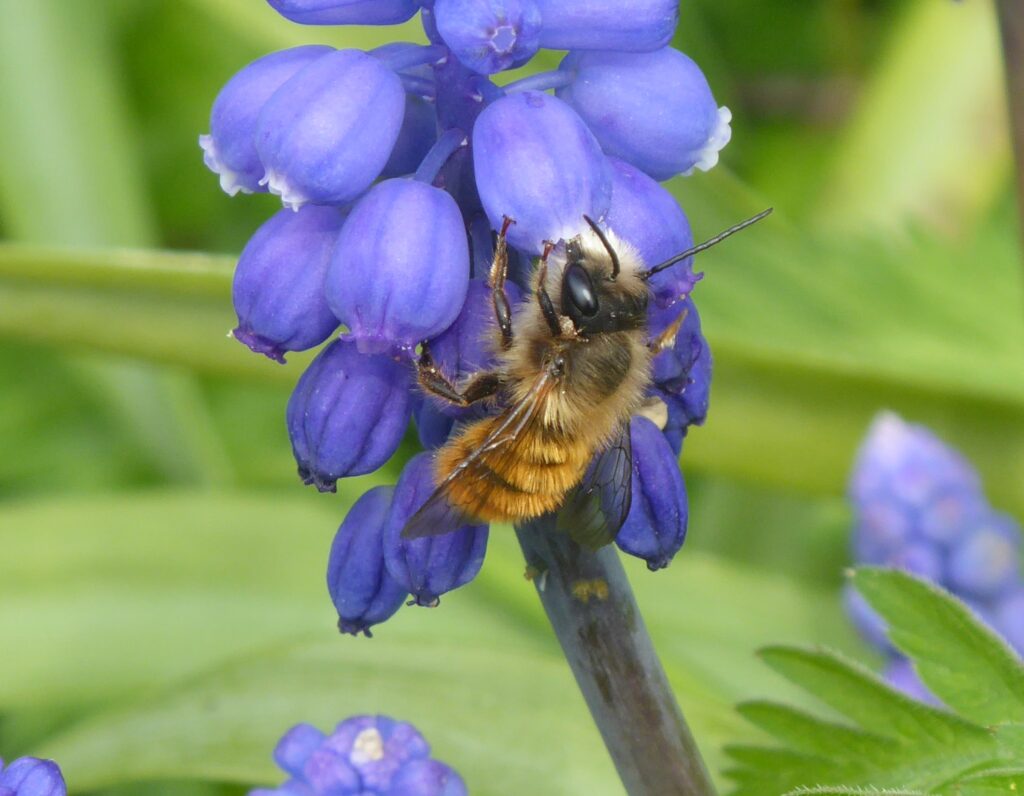
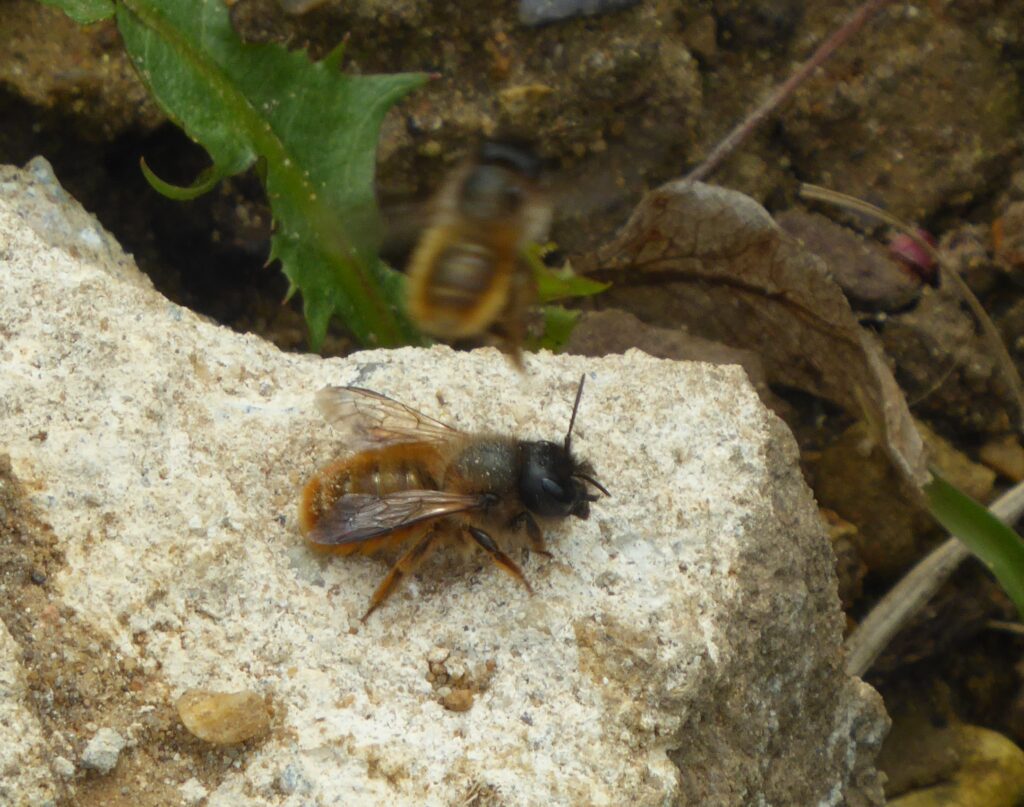
12. Ivy Bee, Colletes hederae
The Ivy Bee first colonised the British Isles in 2001 and spread north into Norfolk from 2013 onwards, reaching the Norwich area by 2016. It often forms large nesting aggregations and there are several of these in the Norwich area.
The Ivy Bee is the last species of bee to emerge in the year and can be seen from late August to mid October. Females collect pollen from Ivy flowers. In Earlham Cemetery, the bee nests on the banks of the Earlham Road entrance drive.
Ivy is a great plant for wildlife and the flowers provide nectar and pollen for a wide range of insects. The berries provide food for birds and the plant’s evergreen foliage is used by nesting birds and hibernating insects.
